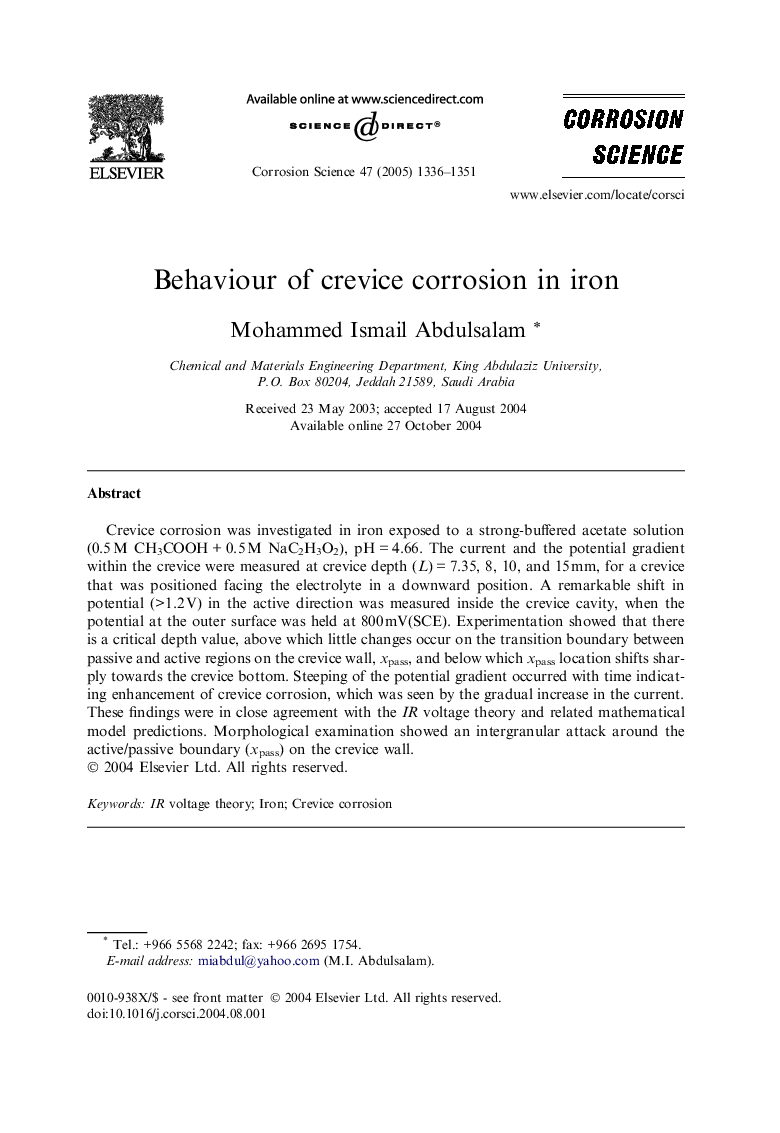| Article ID | Journal | Published Year | Pages | File Type |
|---|---|---|---|---|
| 10628695 | Corrosion Science | 2005 | 16 Pages |
Abstract
Crevice corrosion was investigated in iron exposed to a strong-buffered acetate solution (0.5Â M CH3COOHÂ +Â 0.5Â M NaC2H3O2), pHÂ =Â 4.66. The current and the potential gradient within the crevice were measured at crevice depth (L)Â =Â 7.35, 8, 10, and 15Â mm, for a crevice that was positioned facing the electrolyte in a downward position. A remarkable shift in potential (>1.2Â V) in the active direction was measured inside the crevice cavity, when the potential at the outer surface was held at 800Â mV(SCE). Experimentation showed that there is a critical depth value, above which little changes occur on the transition boundary between passive and active regions on the crevice wall, xpass, and below which xpass location shifts sharply towards the crevice bottom. Steeping of the potential gradient occurred with time indicating enhancement of crevice corrosion, which was seen by the gradual increase in the current. These findings were in close agreement with the IR voltage theory and related mathematical model predictions. Morphological examination showed an intergranular attack around the active/passive boundary (xpass) on the crevice wall.
Keywords
Related Topics
Physical Sciences and Engineering
Materials Science
Ceramics and Composites
Authors
Mohammed Ismail Abdulsalam,
